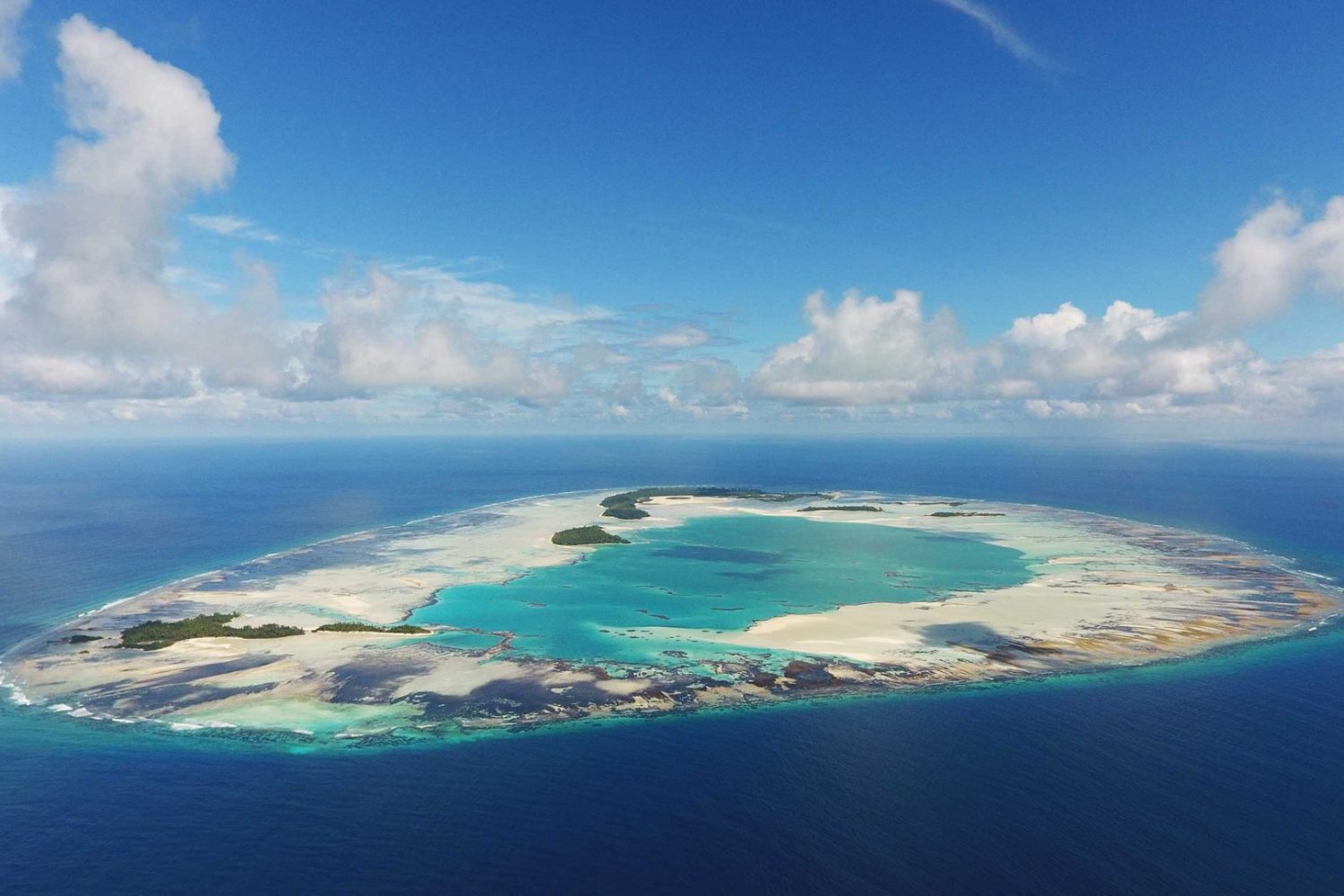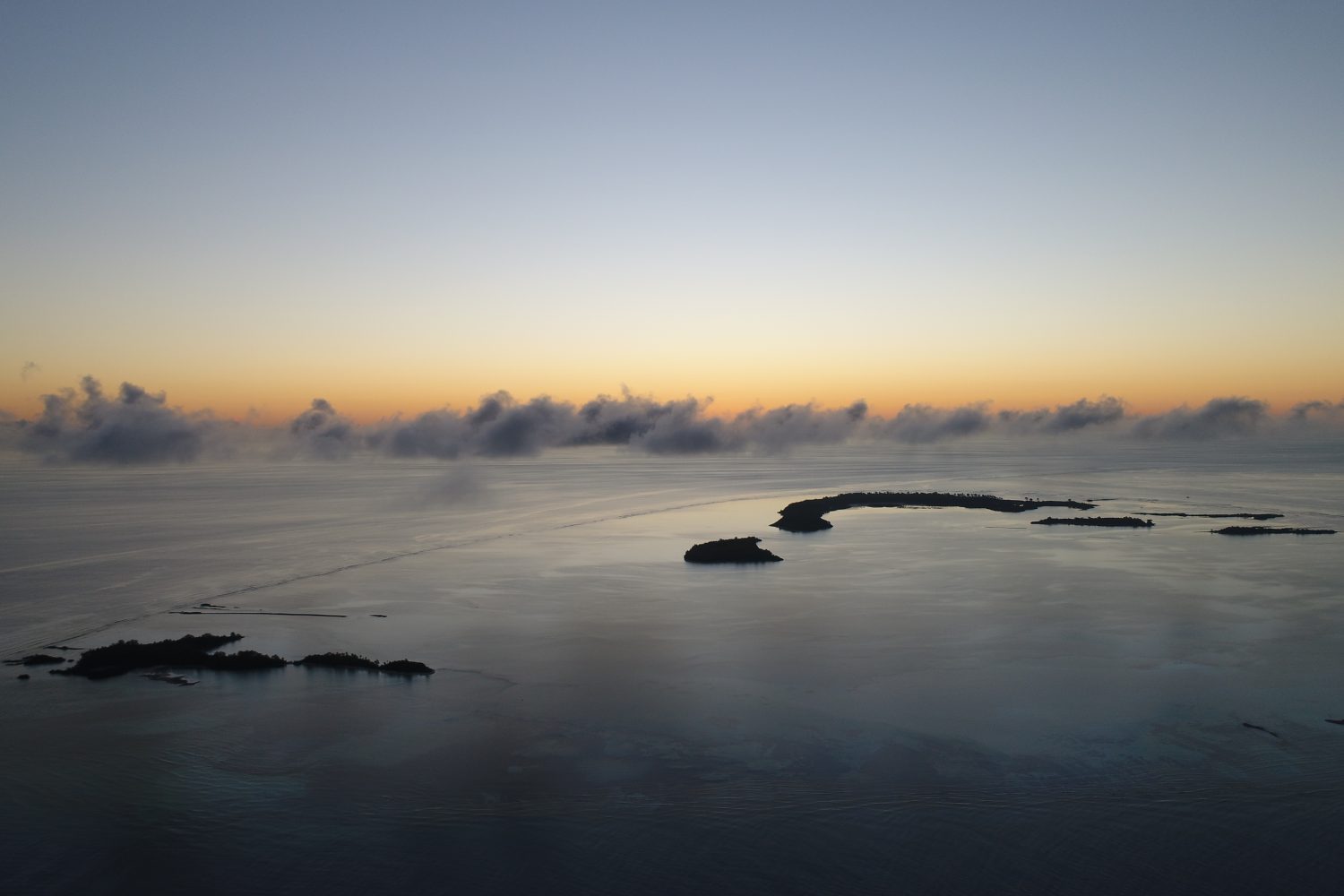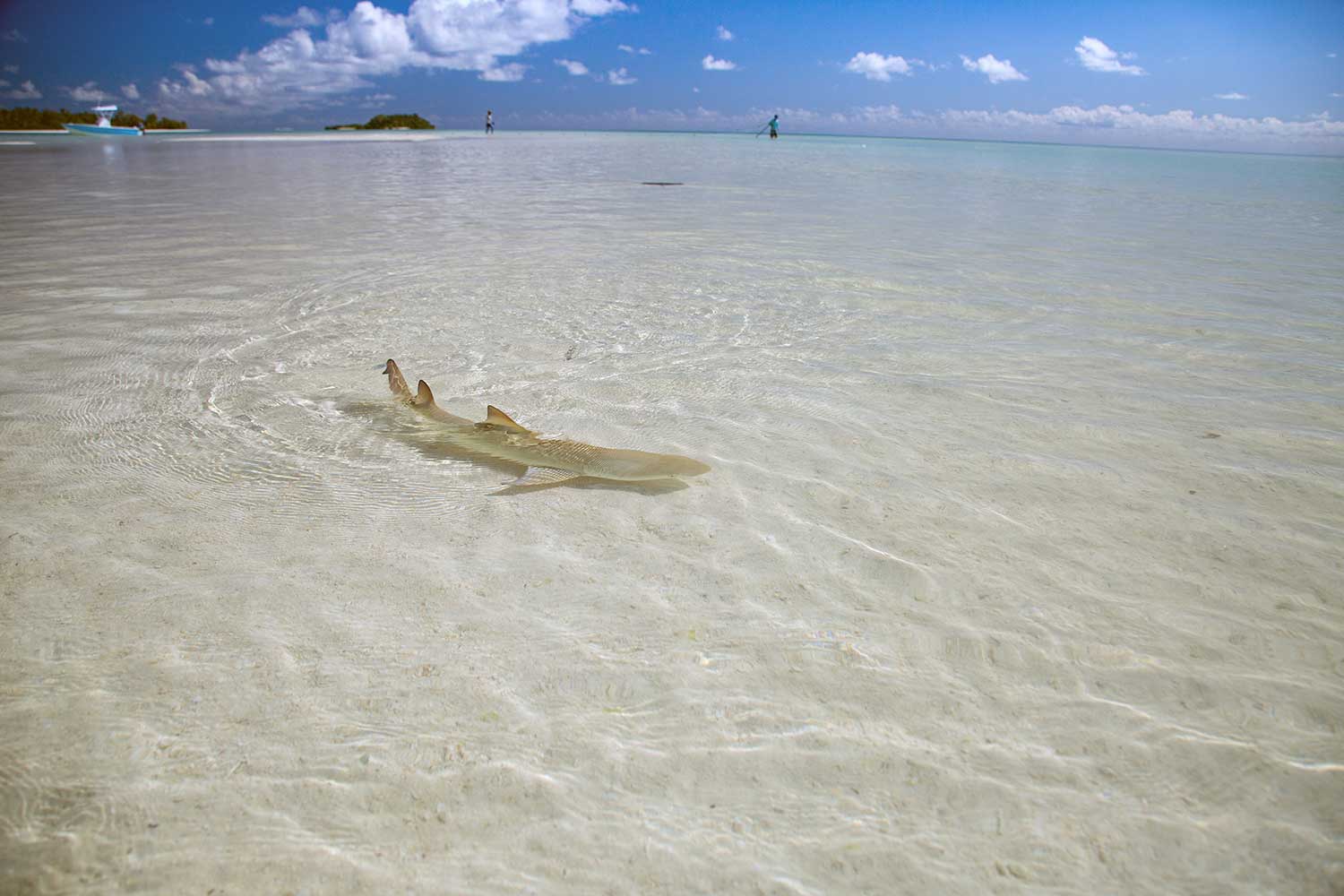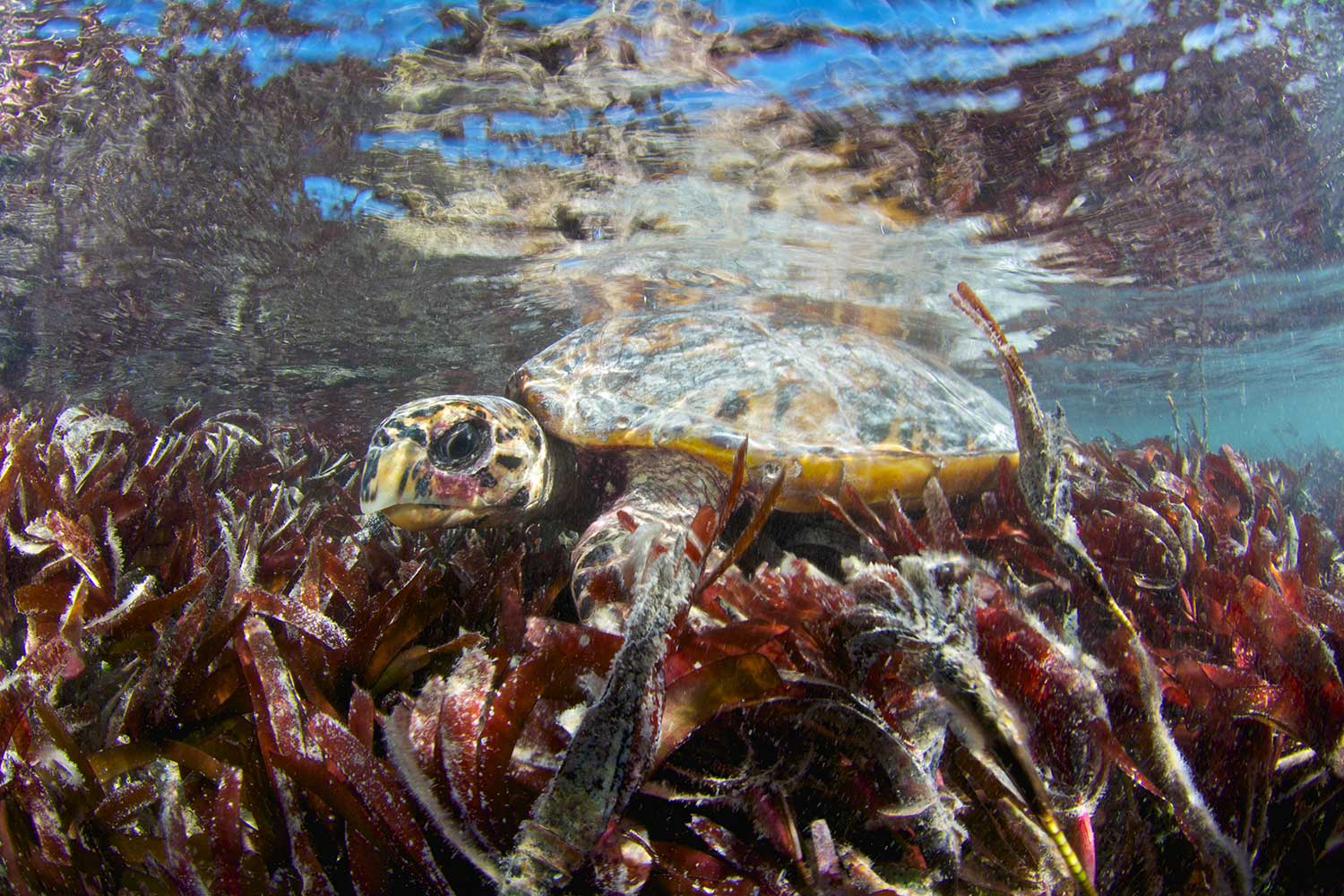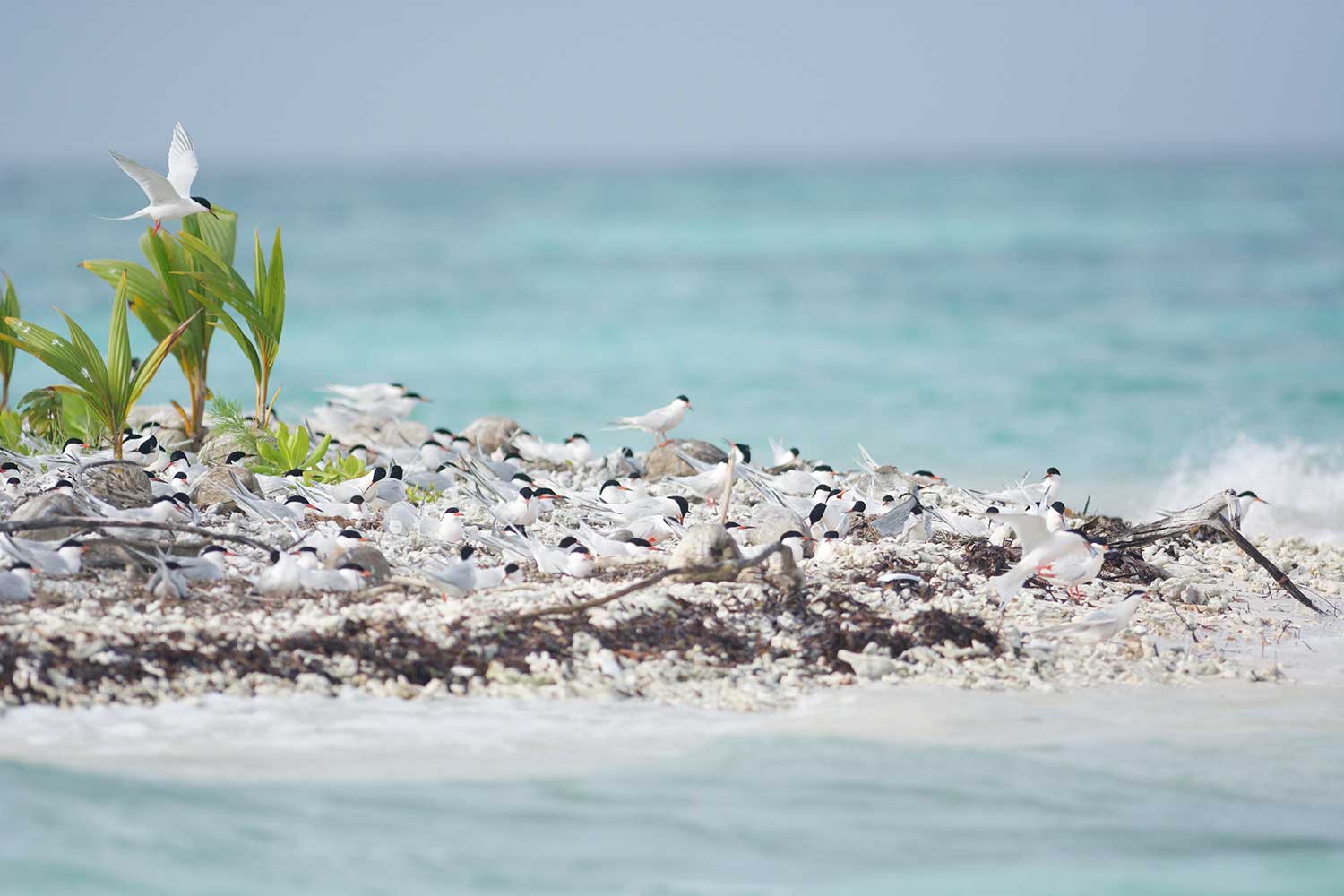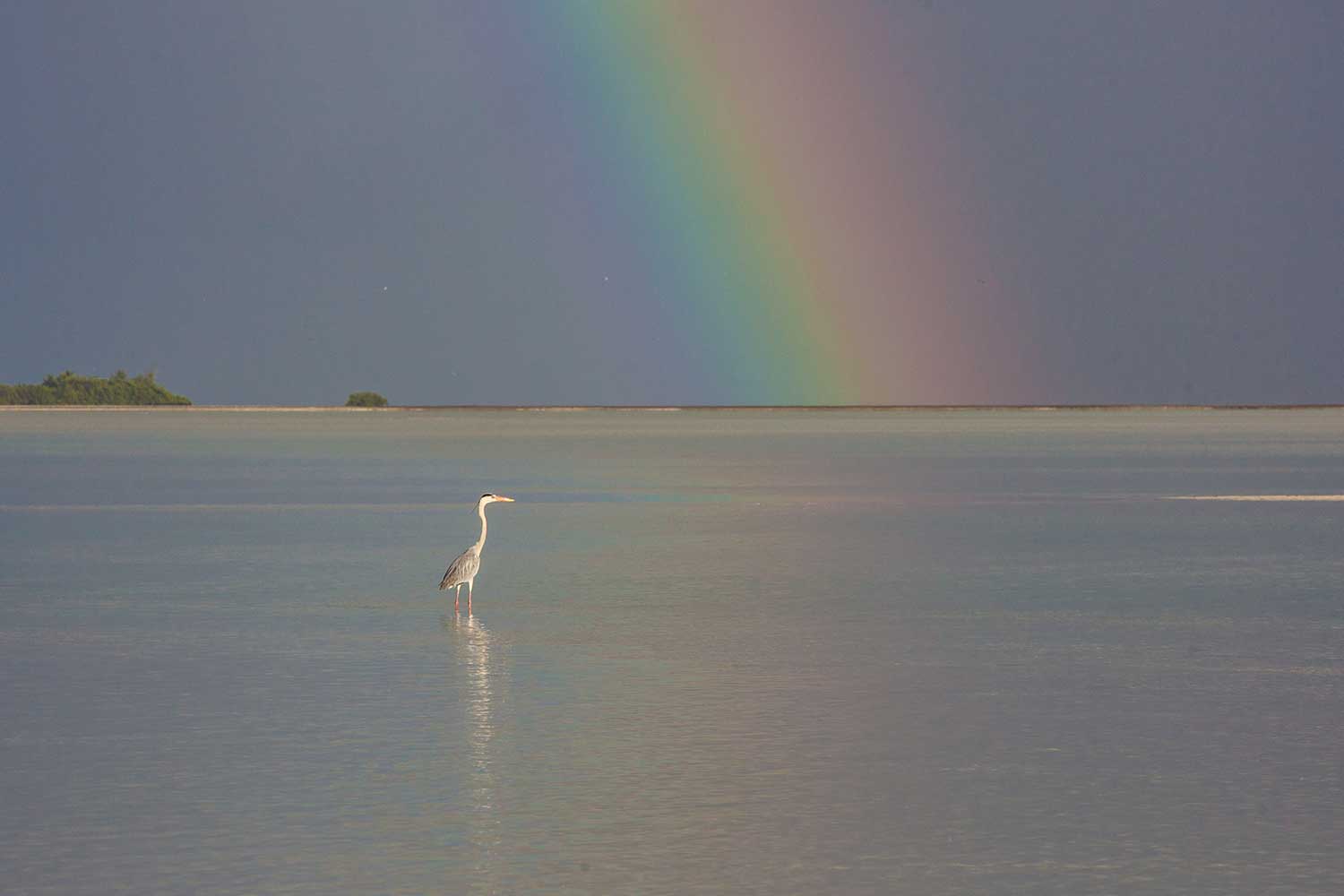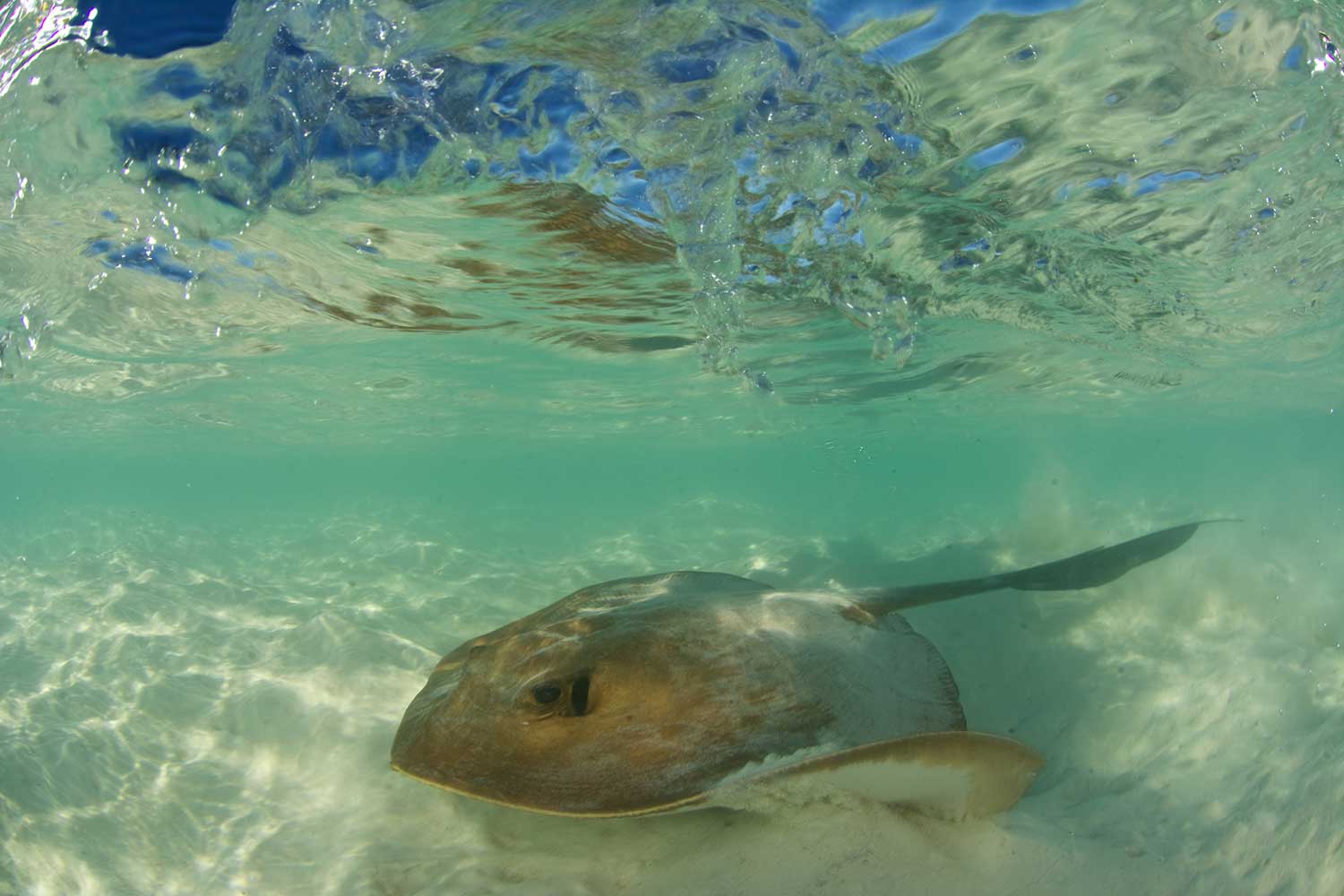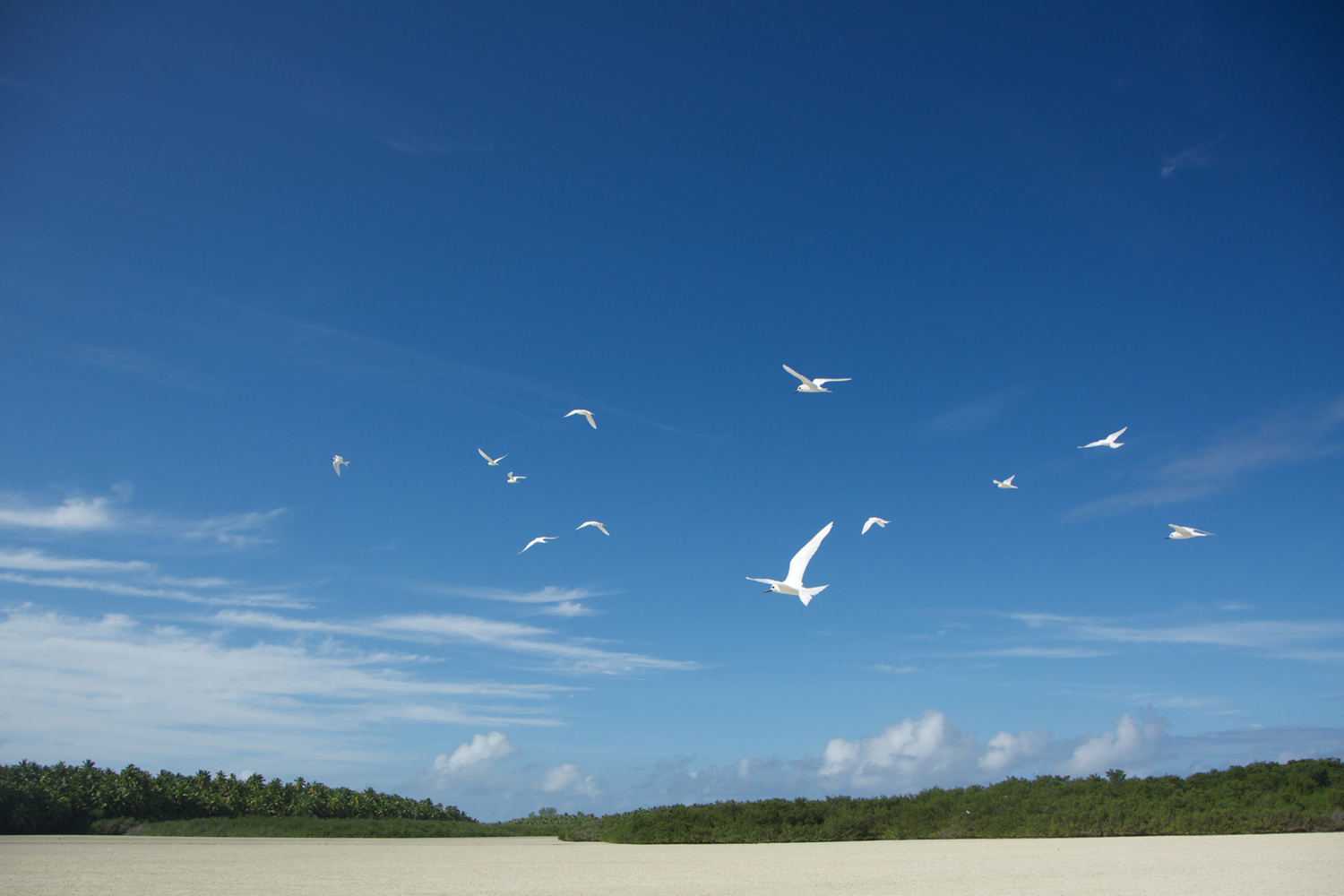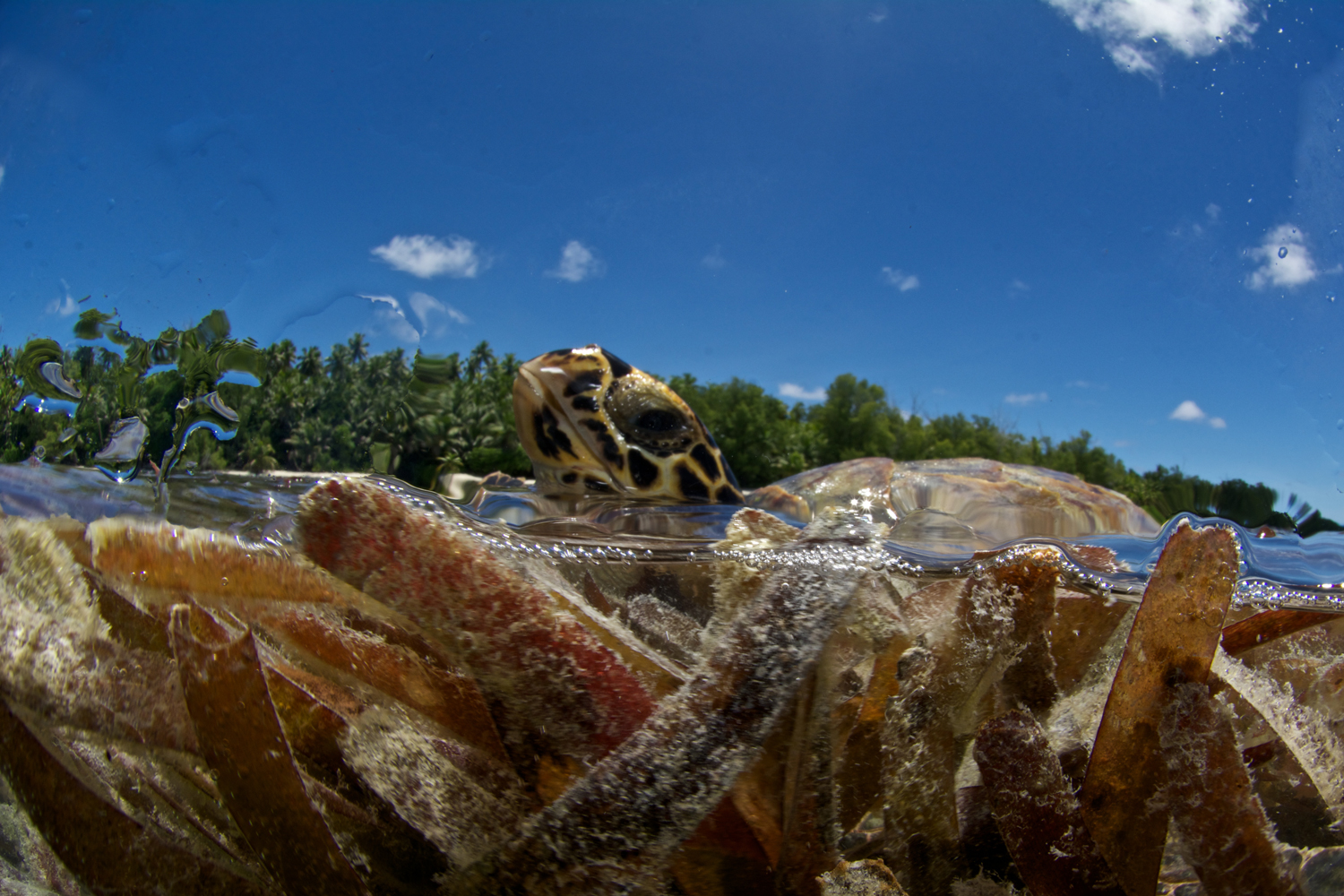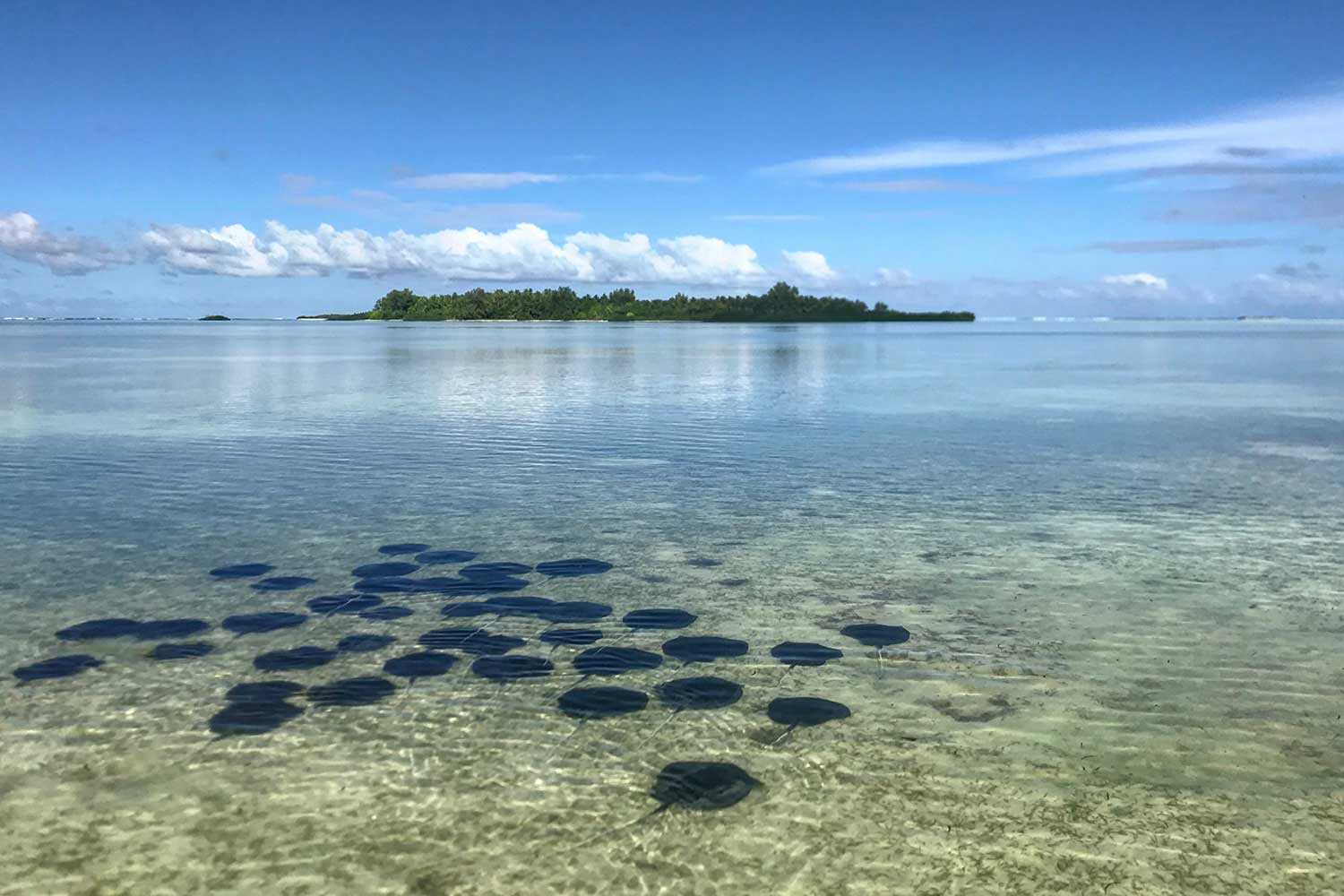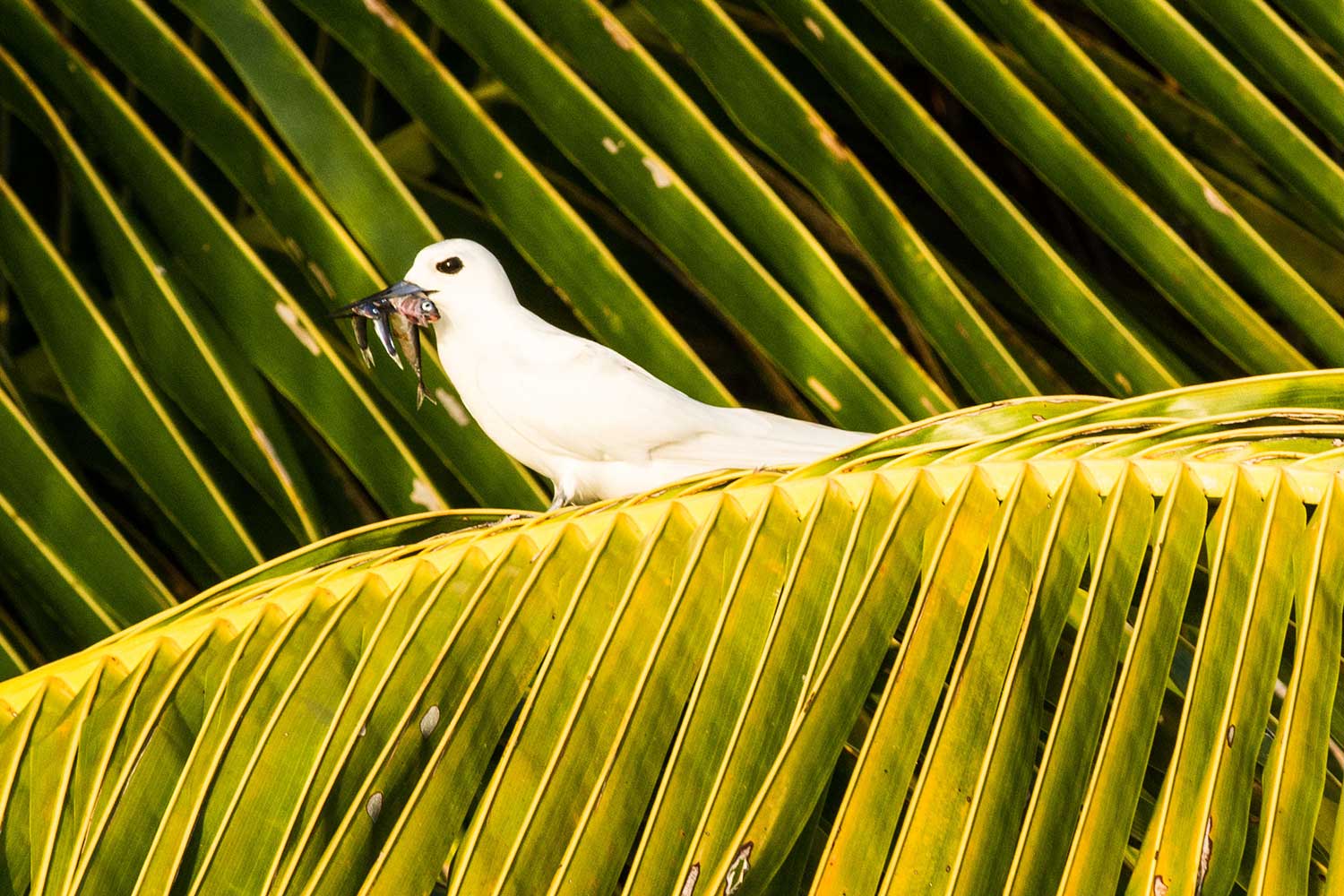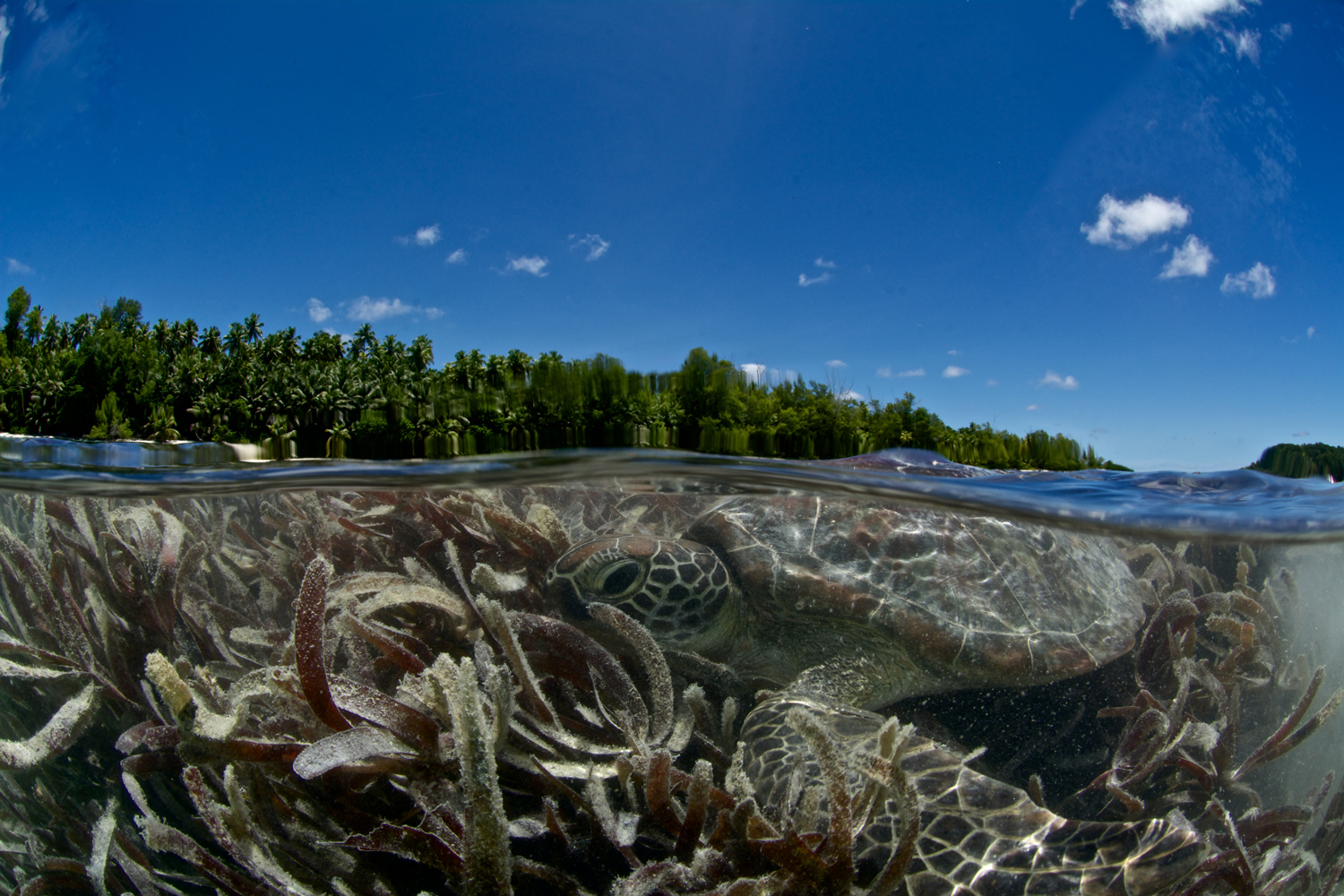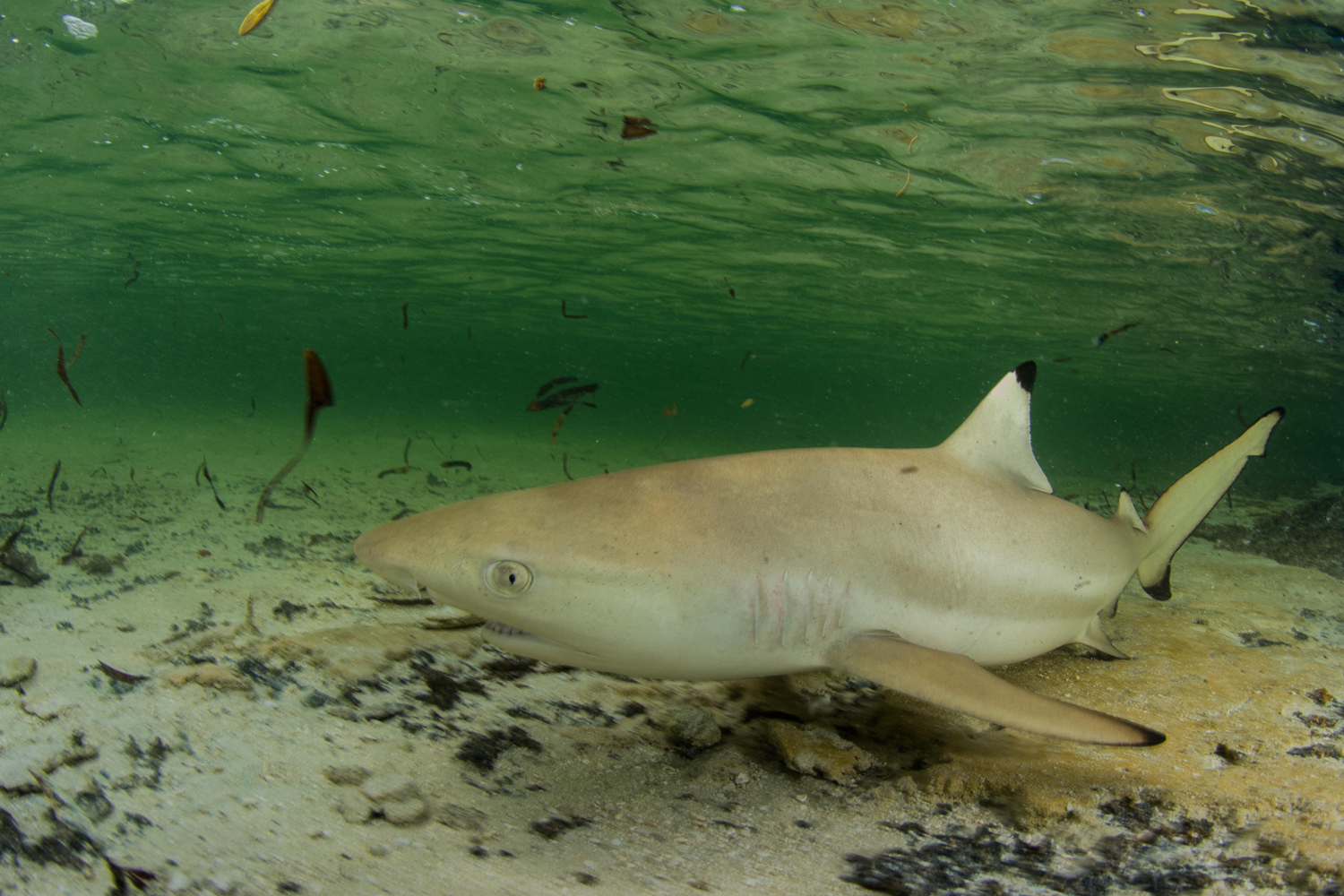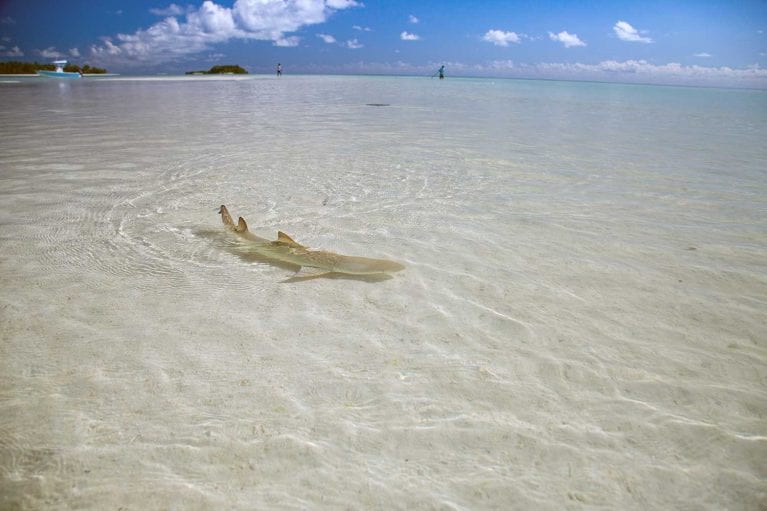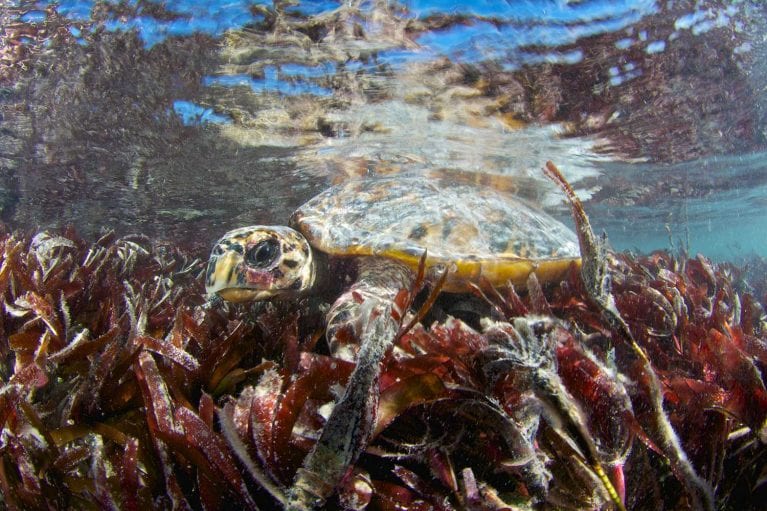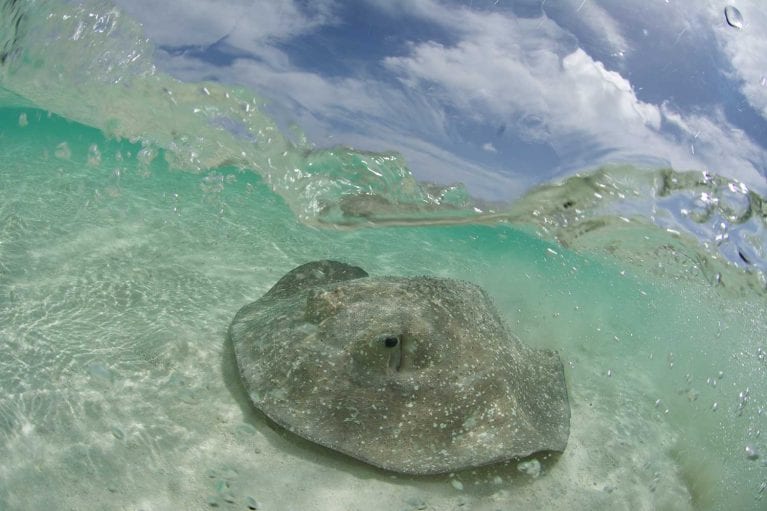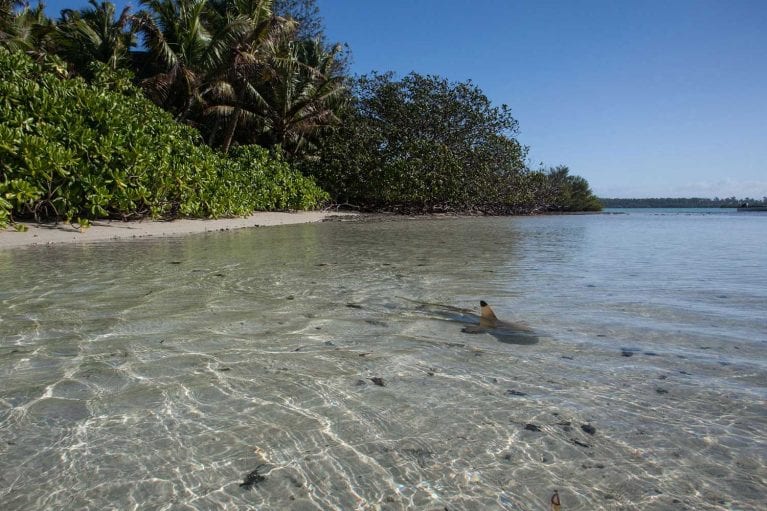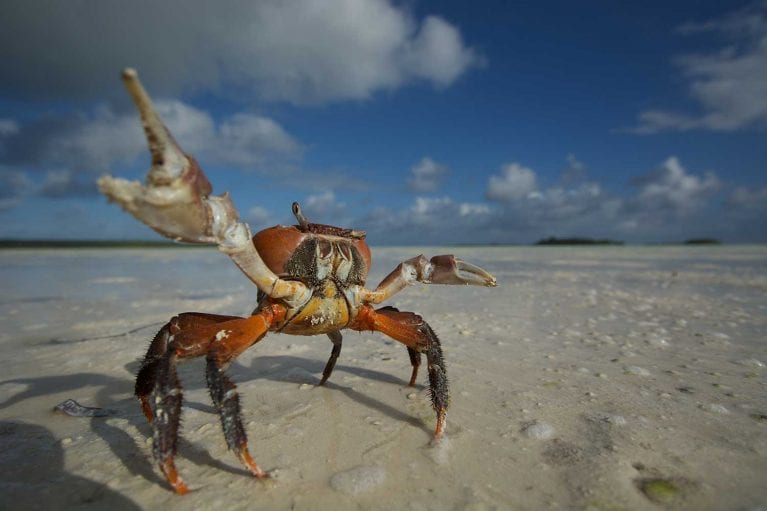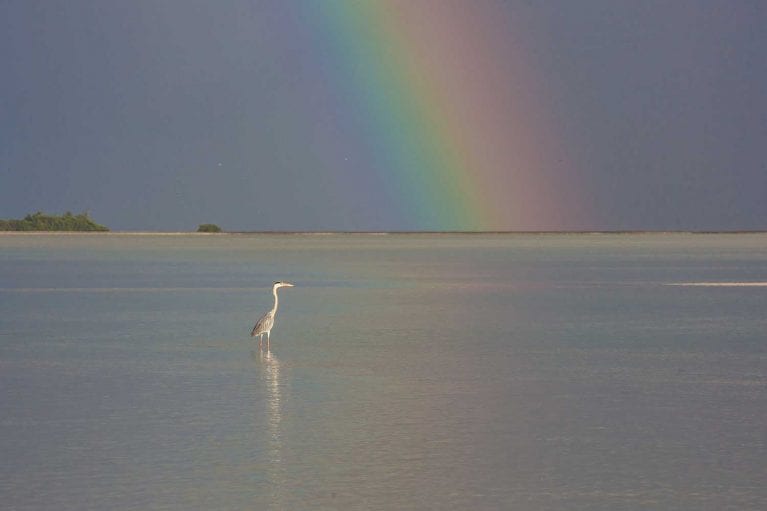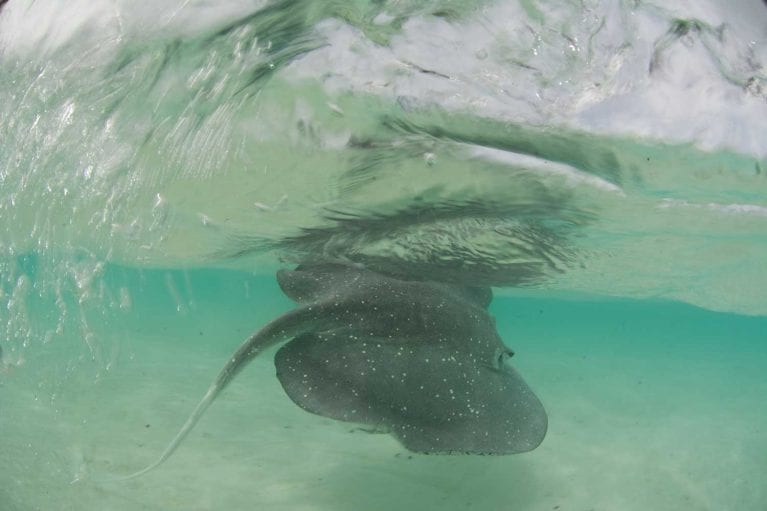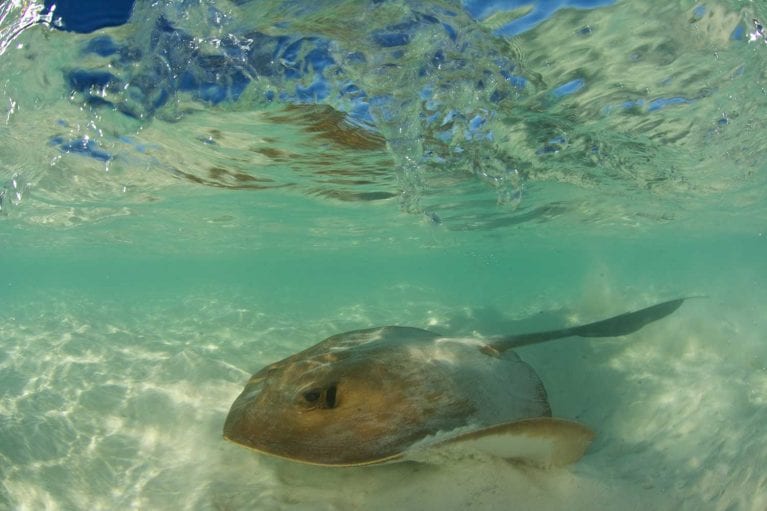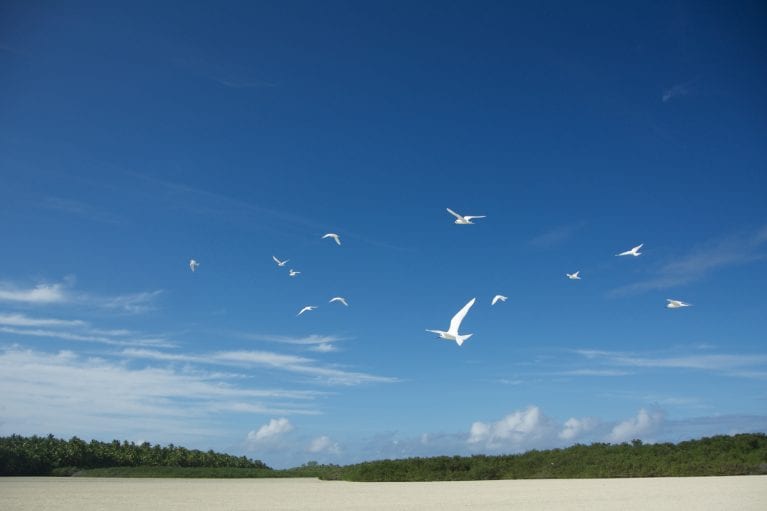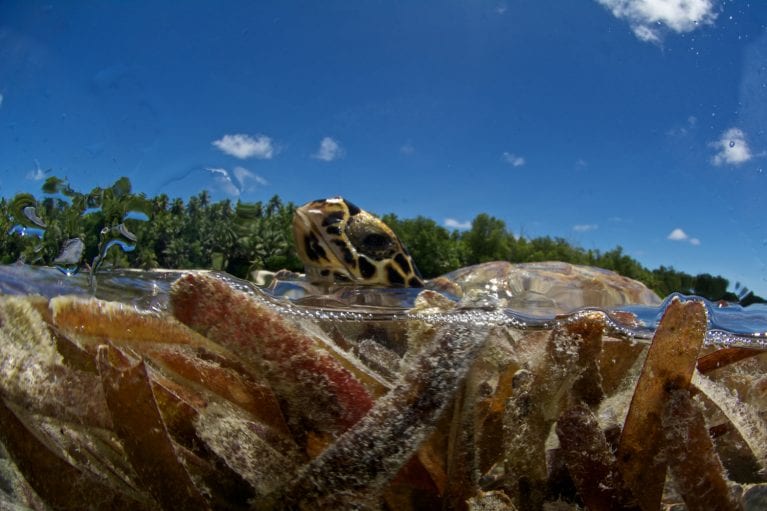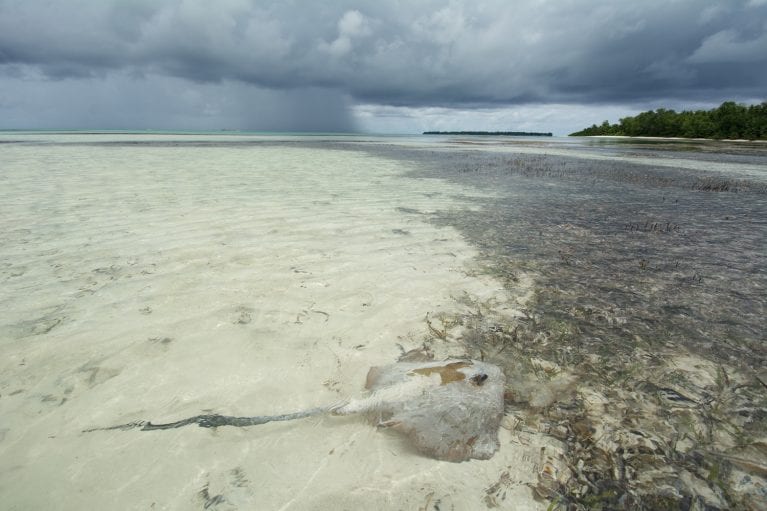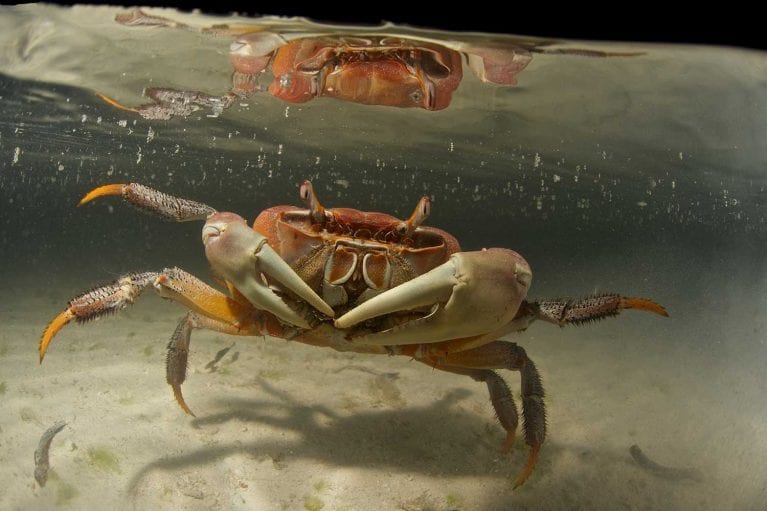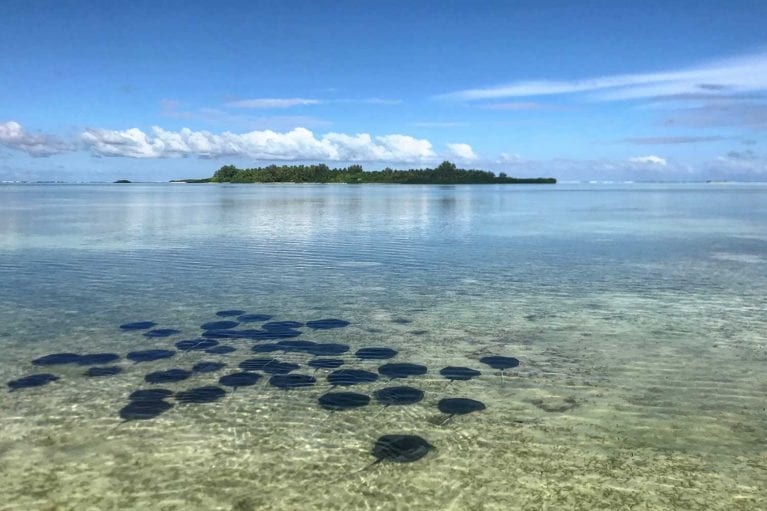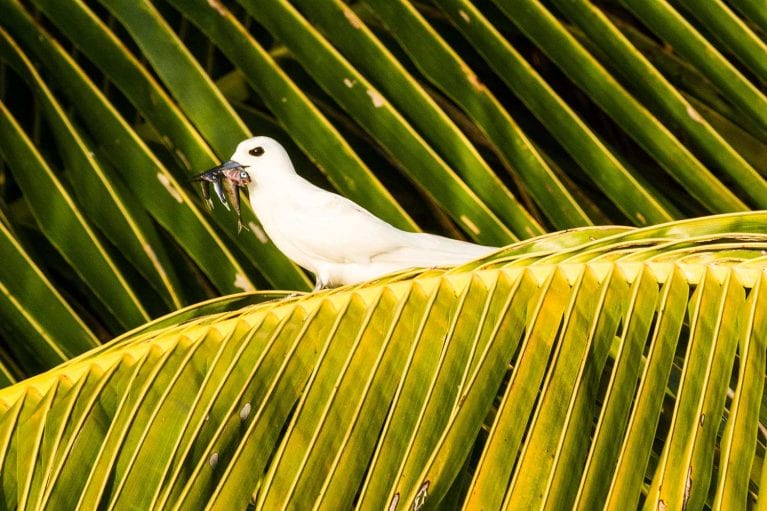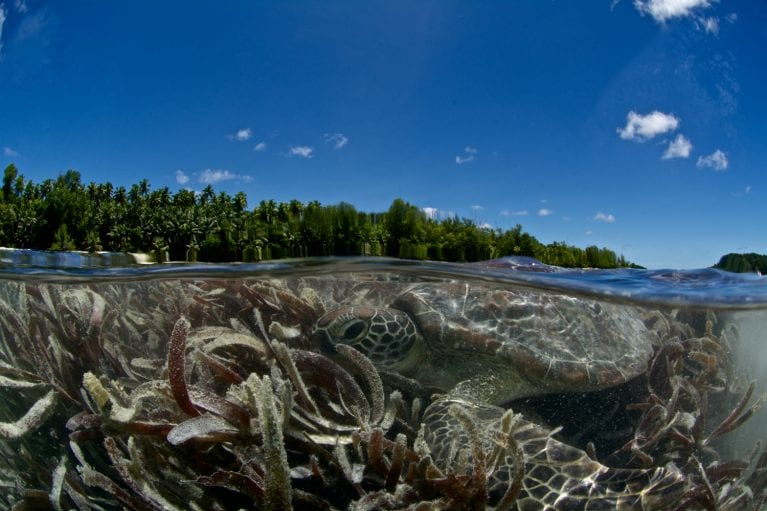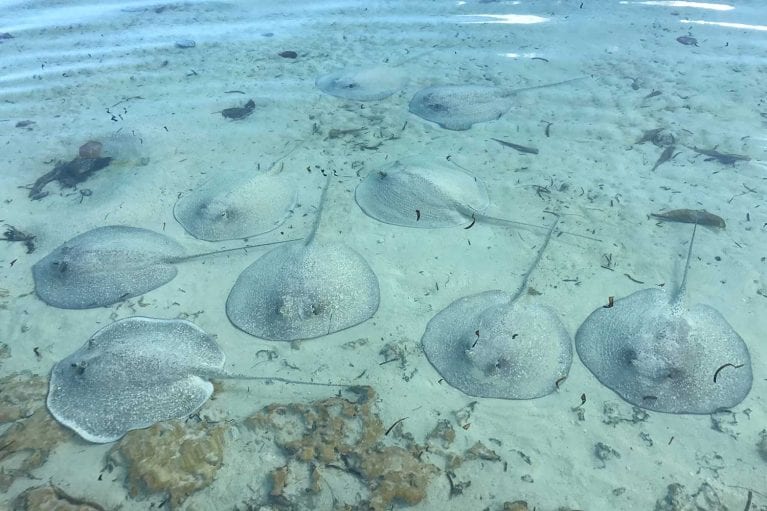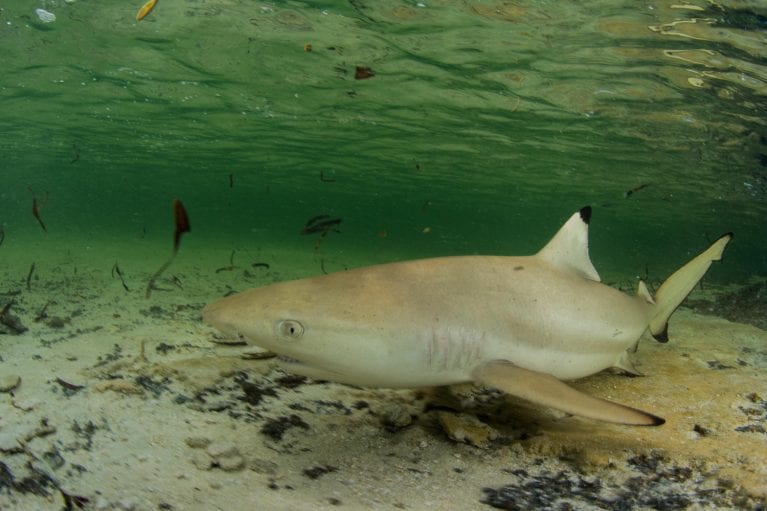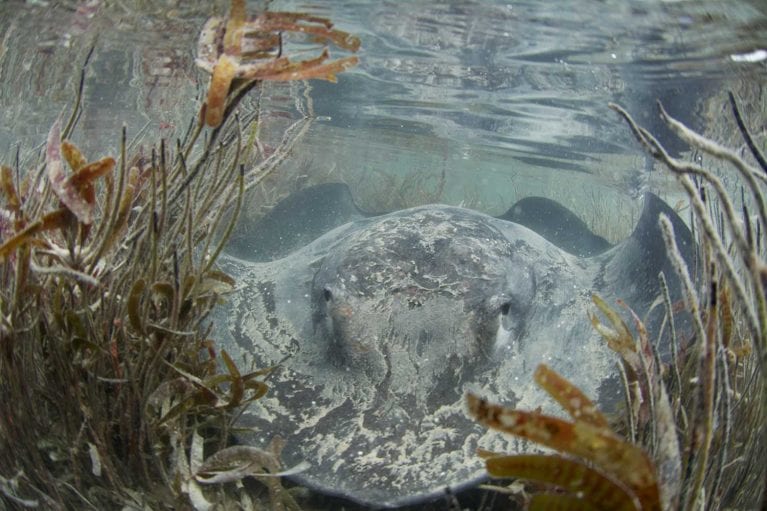A dance of distribution
All ecosystems represent a complex web of relationships that have slowly evolved during the infinite passage of time. In some places the nature of these relationships shifts gradually due to seasonal or climatic changes, but in certain coastal environments the changing of the tide governs a daily pattern of behaviour for the animals that have adapted to live in them.
At St Joseph Atoll in the Amirantes Islands, Seychelles, this tidal shift means a delicate dance between sharks, rays, turtles, fishes and even species of crabs and birds. The interactive infographic below represents the tidal movements of the complex community of animals that have made St Joseph their home, adjusting to coexist here over thousands of years.
St Joseph Atoll at low and high tide
The Save Our Seas Foundation’s D’Arros Research Centre has examined this phenomenon by focusing on the movements of two shark species: blacktip reef and sicklefin lemon sharks. By analysing data collected by 88 acoustic receivers placed around the atoll (the only network of its size and kind in the Amirantes), researchers discovered that these shark species are able to coexist successfully at St Joseph Atoll despite their similar diets and behaviour.
‘What is exciting about this research is that it shows us how these species have adapted to exist together in a really confined space, without outcompeting each other – essentially through social distancing. It is a powerful example of how animals carve out specific niches, allowing them to function together within an ecosystem,’
explains Dr James Lea, who led the study and is the current CEO of the Save Our Seas Foundation.
Interactive infographic by Bibliotec | © Save Our Seas Foundation
Since sicklefin lemon and blacktip reef sharks both eat bony fishes, crustaceans, molluscs and rays, they should be competing, but by giving one another space they have found a way to thrive in harmony at St Joseph. Although both species use the whole atoll overall, small differences in where they are and when actually means that blacktips and lemons are only in the same place about 25% of the time. Similar behaviour has been seen in animals that share space on land: lions, leopards, cheetahs and African wild dogs are all predators that hunt in the same areas. They have developed various ways of minimising competition with one another, one of which is to use the same habitat at different times of day.
At St Joseph, sicklefin lemon and blacktip reef sharks have learnt to take advantage of the rising and falling of the tides: at high tide they swim onto the flooded sandy flats in order to hunt and seek shelter from bigger predators like other sharks. When the tide retreats again they return to the deeper waters of the lagoon. The movements of the young of both species are also governed by the tide. At low tide, these very vulnerable sharks are able to hunt on the shallow flats, but at high tide, when the adult sharks arrive, the smaller animals find shelter in the root systems beneath St Joseph’s vast pemphis and mangrove forests.
A juvenile lemon shark in St Joseph Atoll. Photo by Ryan Daly | © Save Our Seas Foundation
The D’Arros Research Centre’s study highlights the importance of St Joseph Atoll as a critical habitat for marine animals and birds and raises concerns about climate change.‘Over thousands of years, these animals have found ways to exist together under the prevailing environmental conditions. Given the narrow tidal range at St Joseph, we have to ask ourselves what would happen if a small increase in sea level were to make the sandy flats available at high and low tides,’ says Dr Lea. ‘How would this affect the finely tuned ecological balance of the animals that currently thrive here?’
For a deeper understanding of these finely tuned ecological interactions, explore our interactive infographic above.
A few members of the St Joseph Atoll community
Read the study At the Turn of the Tide: Space Use and Habitat Partitioning in Two Sympatric Shark Species Is Driven by Tidal Phase.
A special thank you to Jamy Silver and Osamah Atif of Bibliotec for the illustration, design and build of the interactive infographic.

